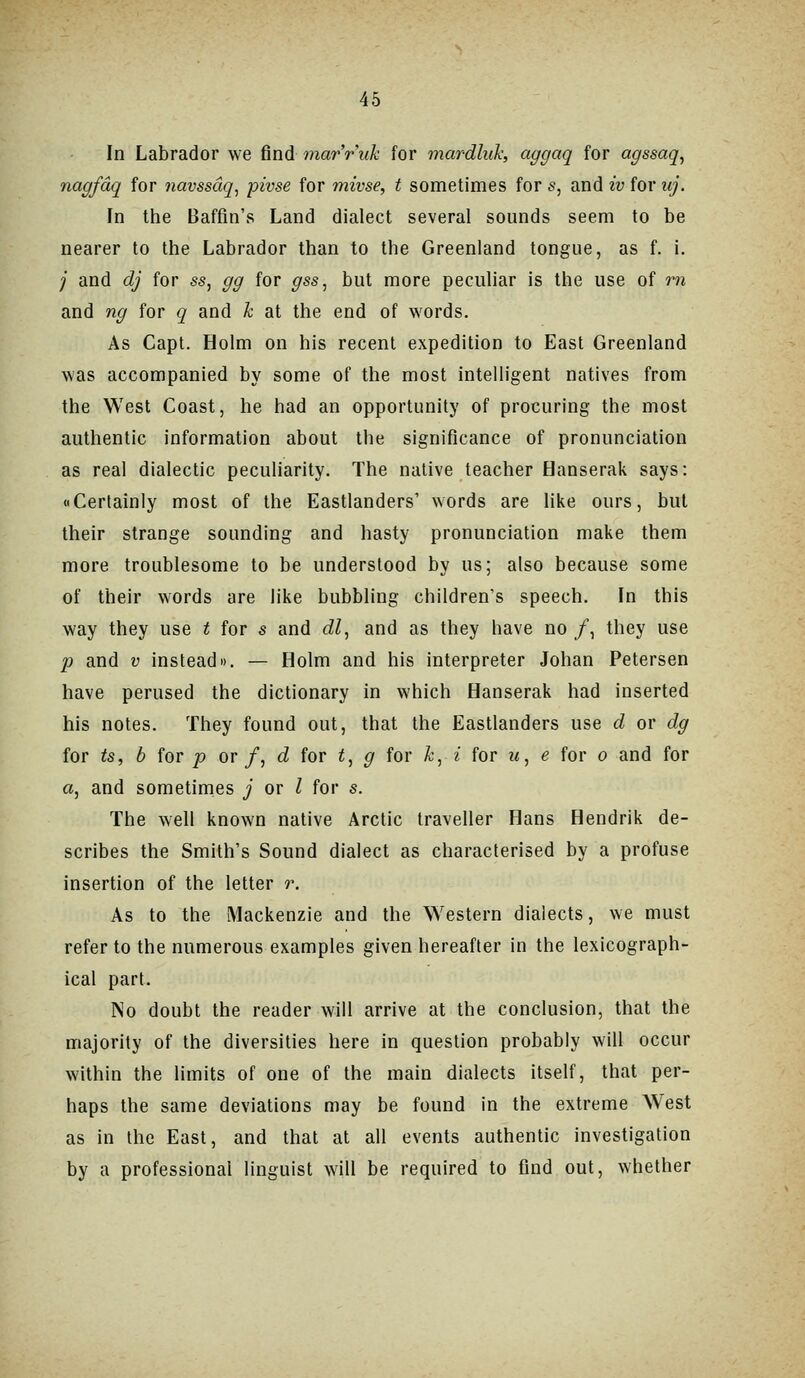
Full resolution (JPEG) - On this page / på denna sida - II. The Eskimo language, its admirable organisation as to the construction and flexion of words - The written language, letters and signs

<< prev. page << föreg. sida << >> nästa sida >> next page >>
Below is the raw OCR text
from the above scanned image.
Do you see an error? Proofread the page now!
Här nedan syns maskintolkade texten från faksimilbilden ovan.
Ser du något fel? Korrekturläs sidan nu!
This page has been proofread at least once.
(diff)
(history)
Denna sida har korrekturlästs minst en gång.
(skillnad)
(historik)
In Labrador we find mar’r’uk for mardluk, aggaq for agssaq,
nagfâq for navssâq, pivse for mivse, t sometimes for s, and iv for uj.
In the Baffin’s Land dialect several sounds seem to be
nearer to the Labrador than to the Greenland tongue, as f. i.
j and dj for ss, gg for gss, but more peculiar is the use of rn
and ng for q and k at the end of words.
As Capt. Holm on his recent expedition to East Greenland
was accompanied by some of the most intelligent natives from
the West Coast, he had an opportunity of procuring the most
authentic information about the significance of pronunciation
as real dialectic peculiarity. The native teacher Hanserak says:
«Certainly most of the Eastlanders’ words are like ours, but
their strange sounding and hasty pronunciation make them
more troublesome to be understood by us; also because some
of their words are like bubbling children’s speech. In this
way they use t for s and dl, and as they have no f, they use
p and v instead». — Holm and his interpreter Johan Petersen
have perused the dictionary in which Hanserak had inserted
his notes. They found out, that the Eastlanders use d or dg
for ts, b for p or f, d for t, g for k, i for u, e for o and for
a, and sometimes j or l for s.
The well known native Arctic traveller Hans Hendrik
describes the Smith’s Sound dialect as characterised by a profuse
insertion of the letter r.
As to the Mackenzie and the Western dialects, we must
refer to the numerous examples given hereafter in the
lexicographical part.
No doubt the reader will arrive at the conclusion, that the
majority of the diversities here in question probably will occur
within the limits of one of the main dialects itself, that
perhaps the same deviations may be found in the extreme West
as in the East, and that at all events authentic investigation
by a professional linguist will be required to find out, whether
<< prev. page << föreg. sida << >> nästa sida >> next page >>